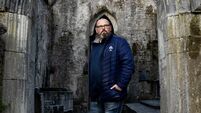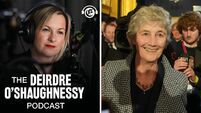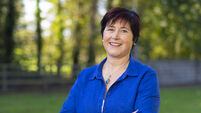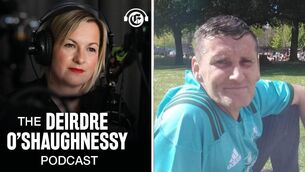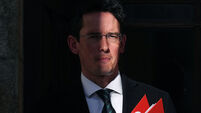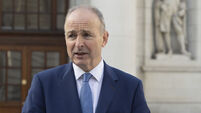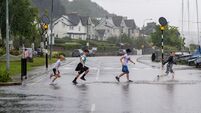'Ireland has led the way': Irish aid for Kenya and neighbouring countries is making a real difference
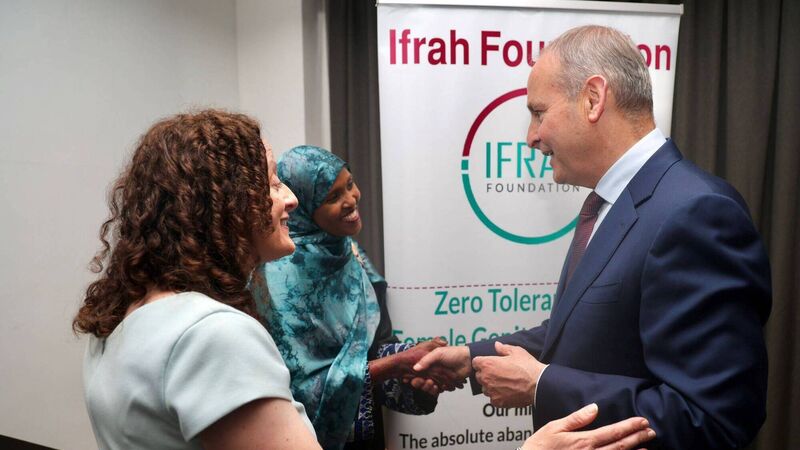
Tanaiste Micheal Martin with activist Ifrah Ahmed and the Irish ambassador to Kenya Caitríona Ingolsby.
A thin young man in shorts wearing flip-flops and pulling a wooden cart suddenly appeared on the motorway amid rushing lanes of SUVs and packed buses in Kenya’s capital Nairobi.
He jogged steadily into a central lane as brakes in vans and packed buses screeched to swerve around him.
All alone, he gripped a chipped blue wooden handle in each hand and except for a quick wide-eyed glance around him, did not deviate from his journey.
The SUVs sped on, carrying people to offices in gleaming skyscrapers or maybe restaurants serving cuisine from around the world or one of the many exclusive gyms advertising their wares on TV.
Some of those cars on Wednesday carried Tánaiste Micheál Martin and his officials as they visited projects funded by donations from Ireland during a four-day trip to Kenya and Ethiopia.
Shacks made from corrugated iron leant haphazardly against each other by the busy road as they passed.
These were covered in fine, red dust, as were many people sitting outside smoking or selling anything from clothes to bananas.
Here and there, women laboured over three-legged stoves that belched dark smoke and often tumbled over to burn bare feet or arms.
Ireland’s aid contributions are probably not the largest in monetary sums to Kenya and neighbouring Ethiopia and Somalia, known collectively as the Horn of Africa.
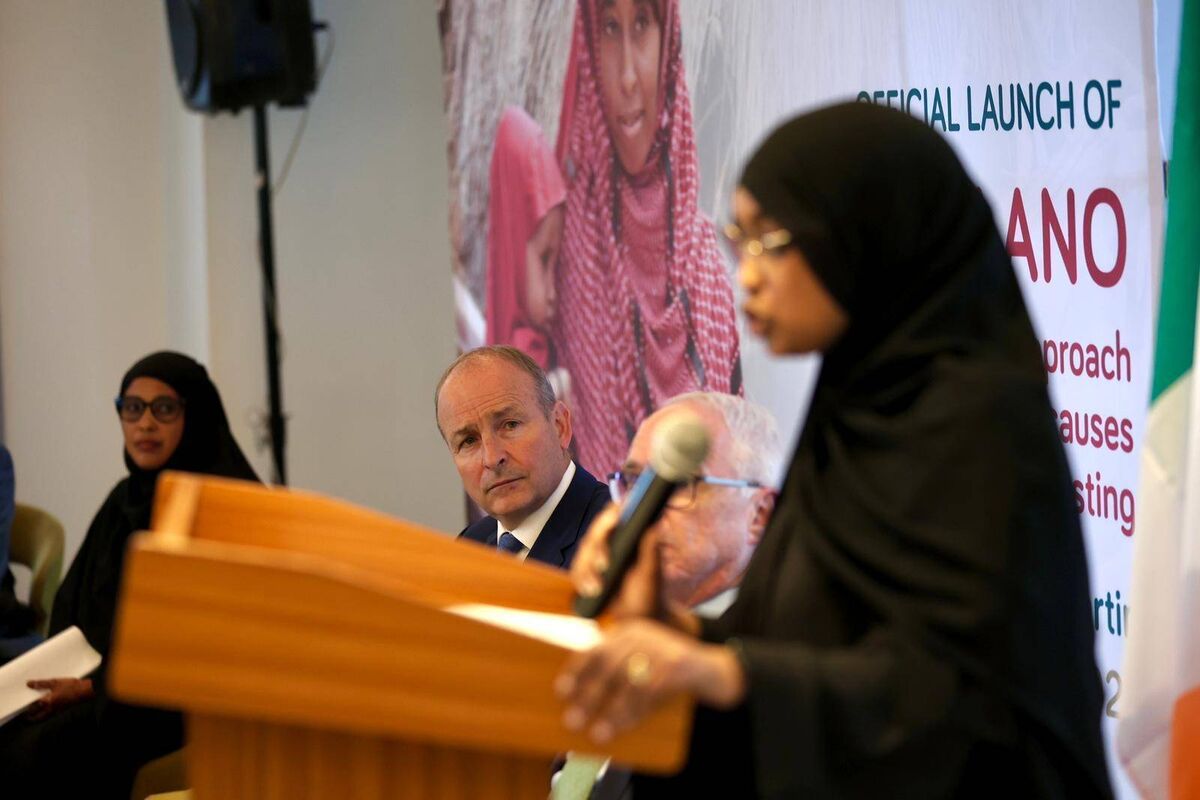
However, aid workers say the depth of the Irish commitment — emotionally and time-wise — provides a steady foundation to leverage more supports locally and internationally.
It is a commitment not always appreciated, perhaps, when Irish people query the value of these donations — more than €415m in the last five years, with more supports announced this week.
Austin Kennan, Concern Worldwide country director for Ethiopia, has grappled with this question. He acknowledged the years of “extremely generous” donations but agreed there are mixed views.
“It’s not a case of if you support Ethiopia or other countries you are somehow not going to put money into housing and health [in Ireland],” he said in the capital Addis Ababa.
“We’re in an interconnected world, so if we take a very narrow view we will actually lose out in the long run. Ireland has led the way in many ways and can continue to do so.”
Climate change has made those connections ever more real as droughts, floods and other extreme weathers lash the world.
Just two years ago, the Horn region was hit by a drought so severe cattle and goats collapsed to die where they stood on parched red earth — more than 13 million livestock dead. Then the rains returned.
Emmy Aura Odero, country director for Kenya and the Horn region with International Alert, segues into a horrifying personal experience.
“A few months ago there was massive flooding across the country,” she said.
“It washed away schools, it washed away vehicles, buildings collapsed. People had to get out of their homes, especially in Nairobi, people who had bought their homes or constructed their homes had to move away.”
Her work focuses on links between climate change and conflict.
The region has seen much of the latter also, with conflict continuing in Somalia, while Ethiopia still grapples with the fall-out from the recently ended bloodshed in the Tigray Region.
On a smaller scale, Nairobi has seen angry scenes between protesters demonstrating against tax increases and government in recent weeks, including claims of shootings by police with teargas used on Tuesday.
Borders, as Irish people know too well, are porous, so problems in one country tend to spill over whether they are man-made or natural.
This can also mean solutions found in one country can sometimes be applied elsewhere in the region.
Ifrah Ahmed, a woman’s health activist, works across Ireland and Somalia, with connections to groups in neighbouring Horn of Africa countries too.
Having come to Ireland as a refugee in 2006, she is now “a proud Irish-Somali” she said, using her knowledge of these different cultures to champion girls.
Speaking in Nairobi during a reception for Mr Martin, she described herself as a survivor of female genital mutilation (FGM) rather than a victim.
The disturbing practice of partially or fully removing the external female genitalia, or other injury to this part of the body, is estimated to have been done to about 98% of women and girls in Somalia.
“I remember talking to some angry men, when I do activism, and they would say ‘I cannot sit in front of other men because they will shame me saying ‘your daughter is not clean because she is not cut’,” she said, trying to explain why the practice continues.
“I meet with mothers who watched their daughter being cut and dying from bleeding.”
She is now seeing results however, “because of all the advocacy we are doing more young girls are saved from dying".
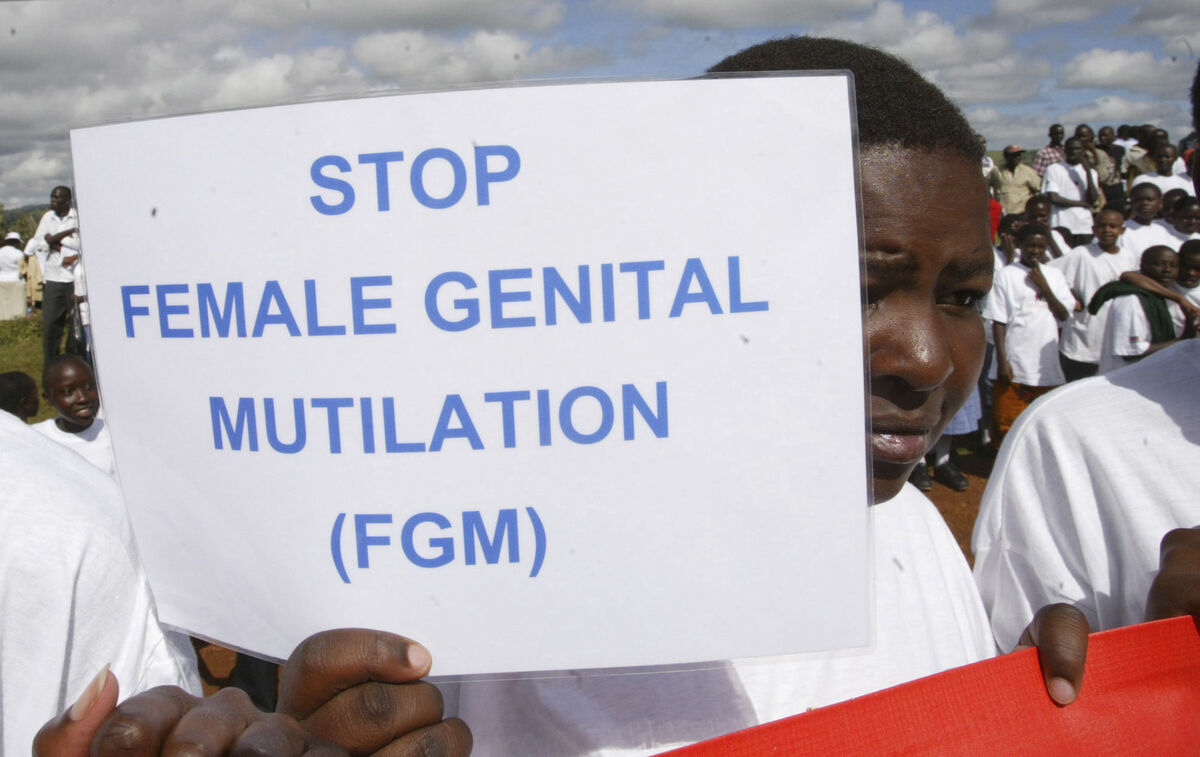
She said: “In the last two years there were zero deaths from FGM where before every day we heard young girls died here and there. Now when young girls are cut they are brought to hospitals.”
Her positive experience of healthcare in Ireland pushes her to continue with more support starting to come from local and national government in Somalia.
“Now, from living in Ireland, I know I shouldn’t be in that situation where I was told you will be killed, watch out for your back and things like that,” she said.
“But even though I know that, I never stop being an advocate.”
She also supports girls and women now living in Ireland who previously experienced FGM.
However, while her own experience of medical care at the Rotunda Hospital was “brilliant”, this is not always the case.
“I met with quite a few pregnant women who have been transferred outside of Dublin, who cannot actually get the same supports I got,” she said.
Speaking to the , Mr Martin pledged to “do something” about this inequity, pointing out with large hospitals in Cork, Limerick or Galway, there should be no discrepancy in care or supports.
In rural Kenya, Martin Ballantyne draws on ties between Cobh and Mayo for mainly health and sanitation projects run by Brighter Communities Worldwide.
Like everyone interviewed for this story, he stressed the central importance too of supports from national governments in each country.
Free education, for example, has had a “big impact” since beginning in 2002 in Kenya.
“On the first day [then] you had people in their 50s, 60s and 70s turning up for school because they could never afford to go when they were kids,” he said.
Better maternity care has made a “massive difference” to families, he said.
He echoed Ifrah’s concerns around FGM, saying it also happens in this area.
He shared a distressing story about a pregnant woman who bled to death from maternal complications without access to a nurse or doctor.
“There are more health facilities now,” he said, adding while some are just a one-roomed building they have a qualified nurse.
Another local hospital he knows used to have one doctor but now has three and visiting maternity specialists. Small steps.
Tech solutions cross borders too.
On Tuesday, co-working site the Nairobi Garage hosted the launch of Young Scientist Kenya 2024.
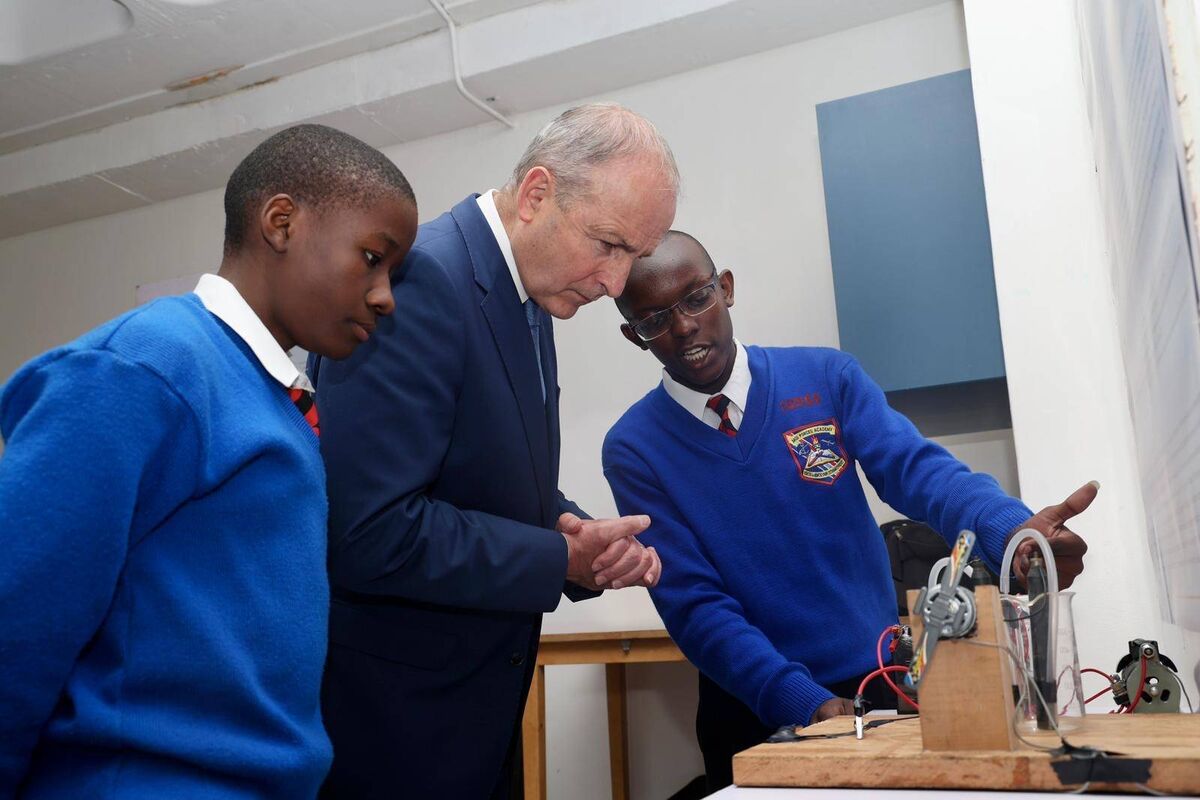
The name is a deliberate echo of the Young Scientist and Technology Exhibition in Ireland for this event supported by the Irish embassy to Kenya but which has evolved in its own way now.
Many projects on display focused on climate change, including aviation pollution.
A giant robotic hand balanced on one desk, however, was created by Maxwell Opondo, 20, who dreams of using robotics to help children with disabilities.
His ‘Zerobionic’ robotic hand turns speech into sign language when connected up.
“I am able to speak on one end and on the other it is able to sign a particular word-set,” he said.
It can also pull up images online to demonstrate new robotics concepts on a connected screen. This hand is already being used in three schools.
He is hopeful of sponsorship to expand this, joking maybe the ’s story might be read by an Irish tech investor.
A red electric tractor could offer a solution to small-holder famers in Ethiopia facing climate change, as well as spiralling inflationary costs.
The National Bank of Ethiopia said recently: “Inflation has fallen to 23.3% in April 2024 (year-on-year basis), compared to a recent peak of 37.3% in May 2022 and an inflation rate of 33.5% this time last year.”
Dubliner David Moore said the Regenerators tractor project is part of a wider agricultural scheme planned to offer a one-stop shop to farmers with anything from seeds to large machinery.
“Fuel is a big issue with foreign exchange, the government doesn’t have the money to buy fuel,” he said.
“Just this week, we were planting crops up in a place called Hawassa and we had no fuel for our [diesel] tractor for two days.”
The electric tractors will offer a way around that. In addition, they are built on an open system manufacturing model, originally developed in America as a diesel tractor, which means parts can be made locally.
“Everything that you think of in farming is 10 times harder here,” he said.
“So, if you took an Irish farmer and put them in Ethiopia they would have the same problems. There’s a misconception they don’t know anything. They do, they just can’t get the things they need.”
The wider project also involves the University of Limerick and University of Hawassa.
In many ways, these stories are also stories of Ireland, of people looking to leave a painful past behind and build something better.
It is a journey Éamon de Valera might have recognised, a man who sits immortalised in an unusual mural on the walls of the Holy Trinity Cathedral in Addis Ababa.
And it is not a path anyone could really travel alone.




